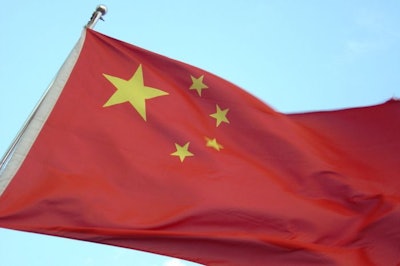
China lifted its ban on poultry imports from the United States, ending the trade barrier that had been in place since 2015, when highly pathogenic avian influenza (HPAI) was detected in the country.
U.S. government officials had been pushing for an end to the ban, as the country has been free of HPAI since 2017. The U.S. exported more than $500 million worth of poultry products to China in 2013
United States Trade Representative Robert Lighthizer and Agriculture Secretary Sonny Perdue announced the end to the ban on the morning of November 14.
“The United States welcomes China’s decision to finally lift its unwarranted ban on U.S. poultry and poultry products,” said Lighthizer. “This is great news for both America’s poultry farmers, and we estimate they will now be able to export more than $1 billion worth of poultry and poultry products each year to China. Reopening China to U.S. poultry will create new export opportunities for our poultry farmers and support thousands of workers employed by the U.S poultry industry.”
Perdue also praised the lifting of the ban.
“After being shut out of the market for years, U.S. poultry producers and exporters welcome the reopening of China’s market to their products,” said Perdue. “ America’s producers are the most productive in the world and it is critical they be able to sell their bounty to consumers in other parts of the globe. We will continue our work to expand market access in important markets like China as well as other countries, to support our producers and U.S. jobs.”
U.S. poultry industry responds
The National Chicken Council (NCC), National Turkey Federation (NTF) and USA Poultry and Egg Export Council (USAPEEC) applauded the announcement that China will lift its ban on imports of U.S. poultry products.
The groups released the following statement welcoming the news:
“Lifting the ban has been a top priority of the U.S. poultry industry for the past four years,” the groups said. “We thank President Trump, Agriculture Secretary Perdue, U.S. Trade Representative Lighthizer, Treasury Secretary Mnuchin, congressional leaders and their staffs, all of whom have worked tirelessly to reach an agreement with China and ensure the poultry industry has access to this market.”
This action represents a significant opportunity for U.S. chicken and turkey producers, the trade organizations stated. At its peak, the annual value of poultry exports from the U.S. to China was $71 million for turkey and $722 million for chicken. Renewed access to the Chinese market could result in $1 billion annually for chicken paws alone and, due to China’s meat protein deficit as a result of African swine fever, there could be as much as another $1 billion of potential exports of other chicken products, including leg and breast meat. Turkey exports could generate another $100 million in sales and poultry breeding stock at least $60 million more.
“America’s poultry producers are committed to raising high-quality, nutritious products, and we are extremely pleased that we will once again have the opportunity to share these products with Chinese consumers. We look forward to resuming a trade partnership with China in the coming weeks,” the groups said in a joint statement.
Sanderson Farms optimistic
The announcement of the China ban’s end came just one day after Sanderson Farms President and Chief Operating Officer Lampkin Butts discussed the possibility of trade with China reopening. Speaking during the Stephens Fall Investment Conference on November 13, Butts seemed optimistic about the prospects, both on the short- and long-term.
“The African swine fever impact on hogs in China is so huge that we believe they’ll have to import a lot of protein in 2020 and beyond that. They will not work out of this shortage of hogs in one year. This is much longer than that,” he said.
Butts also discussed the value of the chicken paw market in China, which he estimated is worth about $30 million more than it was when the ban was first implemented.


















